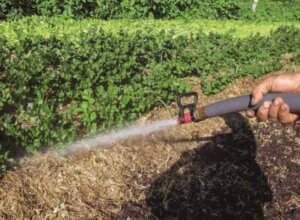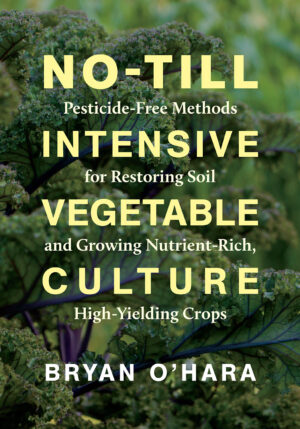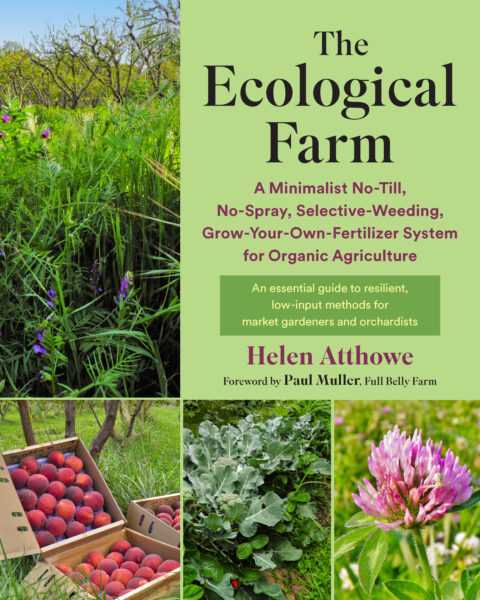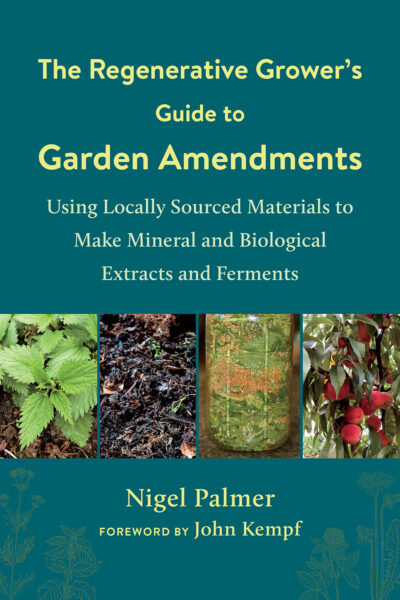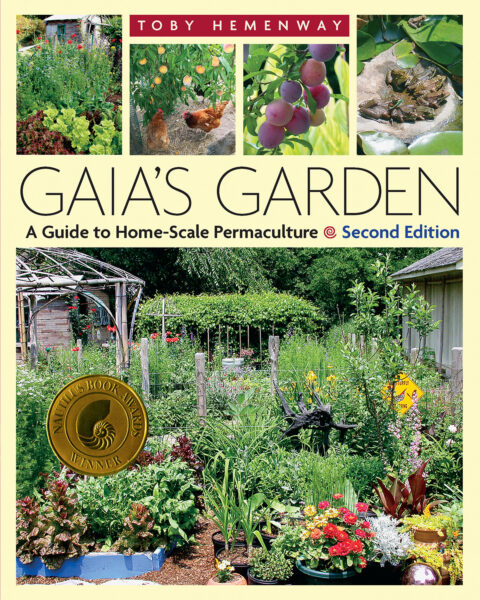A Nourishing Recipe to Boost Seedling Growth

You don’t need to use chemicals or other unnatural ingredients to give your seedlings a boost. Just use a combination of seaweed, apple cider vinegar, and other nontoxic ingredients create the perfect blend. Each recipe can be modified to complement the soil and climate for the best-producing crops.
The following is an excerpt from No-Till Intensive Vegetable Culture by Bryan O’Hara. It has been adapted for the web.
(Photography courtesy of Byran O’Hara unless otherwise noted.)
How to Boost Seedling Growth
We have developed our own formulas for side-dressing and foliar application. They are provided as examples to give insight into how materials can be combined and in what relative volumes. These recipes have been developed for the particular soils and environmental conditions of Tobacco Road Farm: high organic matter, high cation exchange capacity, valley loam soils under the influence of intense pollution, and a generally degraded regional ecosystem subjected to climate modifications.
Because of our growing situation, our recipes are relatively complex, and we frequently alter the ingredients based on our assessment of specific crop needs, or because of field conditions or availability of materials. Simpler versions may well work in other situations.
For all of the following liquid blends, we combine the ingredients in 100 gallons (380 L) of water in the fertilizer tank. The flow from the fertilizer tank is adjusted to further mix this with irrigation water at a ratio of about 1:20. This makes this mixture quite dilute.
Liquid Blend Formulas
We often use a liquid blend formula when we are irrigating newly seeded beds. In this blend we choose to use a relatively weak liquid seaweed product; if we are using a concentrated form, we cut back on the amount added. We include fermented plant extracts if they are available; carrot and beet extracts are our favorite for seed treatment.
To gather vermicompost extract, we water the vermicompost bins about an hour or so in advance, collect the runoff, and immediately utilize it. Liquefied compost extract is a good substitute that is easy to make. We put about 1 gallon of compost in a 5-gallon (20 L) bucket and fill it with water, then stir vigorously, strain, and use immediately.
- 20 fluid ounces (600 ml) liquid seaweed
- 20 fluid ounces (600 ml) apple cider vinegar
- 10 fluid ounces (300 ml) fermented plant juices (FJP)
- 20 fluid ounces (600 ml) carrot/beet plant extract (a type of FJP)
- 20 fluid ounces (600 ml) Epsom salt (magnesium sulfate)
- 5 gallons (20 L) seawater (or 40 fluid ounces agricultural sea salt)
- 5 gallons (20 L) liquid vermicompost extract
- Small amounts of other trace elements such as molybdenum, boron, and sulfur (if deemed necessary)
The quantities listed here will make enough liquid to cover roughly 5,000 square feet (465 sq m). We apply by hand via high-volume hoses with flat fan-spray- pattern nozzles attached, covering the entire surface of newly seeded beds, at a rate appropriate to the soil condition, in order to bring the seed to germination.
VIDEO: A Nourishing Recipe to Boost Seedling Growth
Recommended Reads
Recent Articles
Garden strawberries are excellent for both covering the ground and for growing fruit. If you’re planning out a forest garden, or are just looking for a plant to use as ground cover, strawberries are a great option. The following is an excerpt from The Home-Scale Forest Garden by Dani Baker. It has been adapted for…
Read MoreAsparagus is a delicious vegetable with a layered history. How did this aspiring spear make its way from growing in the wild to appearing on our plates? The following is an excerpt from the The Seed Detective by Adam Alexander. It has been adapted for the web. “Nature gives us the key to every secret…
Read MoreInterested in growing trees? Here are some tips on successfully planting, transplanting, and pruning trees to create a flourishing forest garden! The following is an excerpt from The Home-Scale Forest Garden by Dani Baker. It has been adapted for the web. Planting Potted Trees and Shrubs If you order potted trees, check with your supplier to…
Read MoreWith the right strategies and practices, composting on a small farm is surprisingly easy and inexpensive. Just follow these steps for making compost, and your farm will be thriving in no time! The following excerpt is from The Lean Farm Guide to Growing Vegetables by Ben Hartman. It has been adapted for the web. (All photographs by Ben…
Read MoreGarlic mustard: while known as “invasive,” this plant can be consumed in its entirety and has great nutritional value. Plus, the garlic-flavor is a perfect addition to any recipe that calls for mustard! The following are excerpts from Beyond the War on Invasive Species by Tao Orion and The Wild Wisdom of Weeds by Katrina…
Read More

